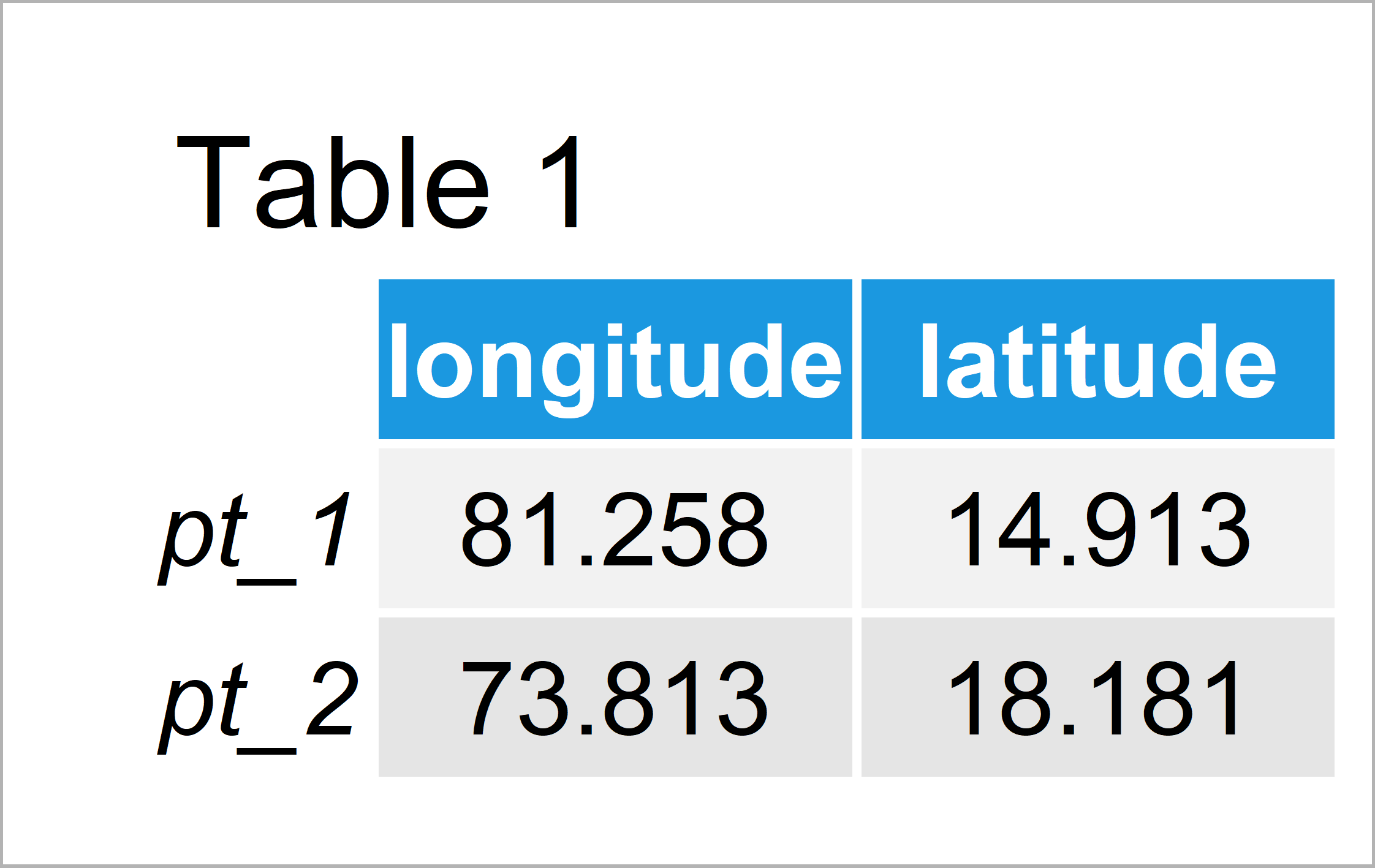Law of Cosines Great Circle Distance in R (Example)
In this R tutorial you’ll learn how to calculate the Law of Cosines distance.
The content looks as follows:
It’s time to dive into the programming part:
Exemplifying Data
We’ll use the following data as basement for this R tutorial:
my_points <- matrix(c(81.25798, 73.81277, # Create longitude/latitude matrix 14.91254, 18.18145), nrow = 2) colnames(my_points) <- c("longitude", "latitude") rownames(my_points) <- c("pt_1", "pt_2") my_points # Print longitude/latitude matrix

Table 1 shows that the example data is composed of two longitude and latitude points.
Example: Calculate Law of Cosines Great Circle Distance Using distCosine() Function of geosphere Package
The following R programming syntax illustrates how to apply the distCosine function of the geosphere package to calculate the Law of Cosines great circle distance in R.
First, we need to install and load the geosphere package:
install.packages("geosphere") # Install geosphere package library("geosphere") # Load geosphere
Now, we can use the distCosine function to return the distance between our two geospatial points:
my_dist <- distCosine(my_points) # Calculate Law of Cosines distance my_dist # Print Law of Cosines distance # [1] 873680.6
The geographical distance between our two data points according to the Law of Cosines is 873680.6.
Video, Further Resources & Summary
Have a look at the following video of the Statistics Globe YouTube channel. In the video, I’m explaining the R programming codes of this post in RStudio:
The YouTube video will be added soon.
Furthermore, you may want to read the related R articles which I have published on https://statisticsglobe.com/:
- Haversine Great Circle Distance
- Meeus Great Circle Distance
- Distance Along Rhumb Line
- Vincenty Ellipsoid Great Circle Distance
- Vincenty Sphere Great Circle Distance
- Geospatial Distance Between Two Points
- All R Programming Examples
In summary: This article has illustrated how to compute the geospatial Law of Cosines in the R programming language. Don’t hesitate to tell me about it in the comments, in case you have additional questions.






